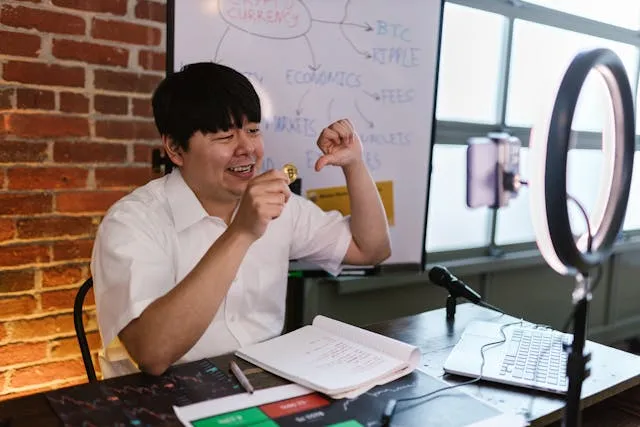Educational Streaming Platforms: Transforming Teaching in Digital Age

Contents [show]
Introduction
The educational landscape has undergone a profound transformation with the rise of dedicated streaming platforms designed specifically for learning environments. Unlike mainstream entertainment services adapted for classroom use, these specialized platforms—including Khan Academy, Coursera, edX, Teachers Pay Teachers, BrainPOP, National Geographic Education, and numerous others—were developed with pedagogical principles at their foundation. Their emergence represents a significant evolution in how educational content is created, distributed, and integrated into teaching practices.
Also Read: From Educator to Entrepreneur: Exploring Opportunities with Celebree School
These purpose-built educational streaming services have fundamentally altered the relationship between teachers, students, and learning resources. They provide unprecedented access to expert instruction, interactive content, and specialized resources that extend far beyond what individual schools or teachers could develop independently. As education systems worldwide navigate increasing demands for personalization, accessibility, and technological integration, these platforms have become essential components of the modern teacher’s professional toolkit.
This article examines how dedicated educational streaming platforms influence contemporary teaching practices, exploring their distinct advantages, implementation challenges, and impact on the evolving role of educators. From supplementing traditional instruction to enabling entirely new pedagogical approaches, these specialized services are reshaping what’s possible in both physical and virtual classrooms, transforming not just content delivery but the very nature of the teaching profession itself.
The Ecosystem of Educational Streaming Platforms
The educational streaming landscape encompasses diverse platforms serving different purposes within the educational ecosystem. Core curriculum platforms like Khan Academy and CK-12 provide comprehensive content aligned with academic standards across multiple subject areas and grade levels. These platforms offer structured learning sequences that can supplement or sometimes replace traditional textbooks, providing both foundational instruction and practice opportunities through video lessons, interactive exercises, and assessment tools.
Subject-specific platforms focus on specialized content areas with particular resource requirements. Services like Labster provide virtual science laboratories when physical facilities are unavailable or inadequate. Language learning platforms such as Duolingo and Babbel offer specialized instruction in dozens of languages beyond what most schools can support. These specialized services extend educational opportunities beyond local resource limitations, democratizing access to quality instruction in areas that traditionally required substantial infrastructure investments.
Professional development platforms like Teaching Channel and Edutopia serve teachers directly rather than students, providing instructional demonstrations, pedagogical discussions, and implementation strategies from master teachers and educational experts. These platforms transform teacher learning from isolated workshops to ongoing, on-demand professional growth opportunities. They allow educators to observe diverse teaching approaches, gather implementation ideas, and reflect on their practice without geographic or scheduling limitations.
Pedagogical Advantages of Purpose-Built Platforms
Educational streaming platforms offer several distinct advantages over both traditional instructional materials and repurposed entertainment content. Their intentional design for learning contexts means content is deliberately structured around pedagogical principles rather than entertainment values. Clear learning objectives, appropriate pacing, embedded comprehension checks, and thoughtful scaffolding reflect established educational research about effective instruction. This learning-centered design contrasts with entertainment content that must be extensively adapted for educational purposes.
The interactive capabilities of these platforms transform passive viewing into active learning experiences. Unlike traditional videos that students merely watch, educational streaming platforms incorporate engagement features—interactive quizzes, manipulable simulations, guided note-taking tools, and response systems—that require cognitive processing during rather than after content consumption. These active learning elements increase engagement while providing immediate feedback that helps students assess their understanding.
Most educational streaming platforms incorporate sophisticated analytics that provide teachers with unprecedented insight into student interaction and comprehension. Detailed data about viewing patterns, engagement levels, quiz performance, and activity completion helps teachers identify struggling students, recognize challenging concepts, and personalize interventions. These analytics transform assessment from periodic snapshots to continuous understanding of student learning processes—information previously unavailable through traditional instructional approaches.
Implementation Approaches: The Spectrum of Integration
Teachers implement educational streaming platforms along a continuum from supplementary enrichment to comprehensive curriculum replacement. The simplest integration approach uses platform content as enrichment resources alongside traditional instruction. In this model, teachers maintain their established curriculum while selectively incorporating streaming resources to enhance specific lessons, provide additional explanation for difficult concepts, or offer enrichment for advanced students. This approach requires minimal disruption to existing teaching practices while still leveraging the engagement benefits of streaming content.
The “station rotation” model represents a more structured integration approach. Teachers organize classroom activities into distinct stations, with the streaming platform serving as one instructional center within a broader learning environment. While some students engage with platform content, others might work directly with the teacher, collaborate on projects, or practice skills independently. This approach maintains significant teacher control over the learning environment while incorporating streaming resources as one component of a diverse instructional experience.
At the integration spectrum’s far end, some teachers adopt a “flipped classroom” approach centered around platform content. Students consume instructional videos and complete initial learning activities through the streaming platform outside class time, reserving in-person sessions for application, discussion, and personalized guidance. This model fundamentally transforms the teacher’s role from primary content deliverer to learning facilitator and coach—a significant shift that leverages streaming resources to restructure the educational experience entirely.
Case Study: Differentiation Through Streaming Integration
Educational streaming platforms demonstrate particular value for addressing the perennial challenge of instructional differentiation. Traditional whole-class instruction inevitably creates pacing challenges—moving too quickly for some students while boring others who quickly grasp concepts. Streaming platforms offer solutions through their flexibility and extensive content libraries.
One exemplary implementation approach uses platform-based “learning pathways” tailored to student readiness levels. While maintaining common learning objectives, teachers assign different instructional sequences based on diagnostic assessments. Students needing additional support receive more scaffolded instruction with additional examples and practice opportunities. Advanced students access accelerated pathways with more complex applications and extended learning. The teacher circulates during implementation, providing targeted support where most needed rather than delivering one-size-fits-all instruction.
Multimodal content availability addresses diverse learning preferences. Students who struggle with text-based information can access video explanations; those who learn best through manipulation can utilize interactive simulations; auditory learners benefit from podcast-style content. These multiple presentation methods maintain consistent learning objectives while accommodating diverse processing preferences, making content accessible to students who might struggle with single-format instruction.
Addressing Implementation Challenges
Despite their advantages, educational streaming platforms present implementation challenges requiring thoughtful navigation. Technical infrastructure limitations create significant barriers in many educational settings. Insufficient bandwidth, outdated devices, and unreliable networks can transform promising digital resources into frustrating experiences. Teachers must develop contingency plans for technology failures while advocating for infrastructure investments that support reliable implementation.
Integration with existing curricula and standards requires careful alignment work. While many platforms advertise standards alignment, the specific sequence, emphasis, and assessment approaches may differ from established district curricula. Teachers must map platform content to required learning outcomes, identifying gaps requiring supplementation and redundancies warranting streamlining. This alignment process demands significant time investment initially but enables more efficient implementation long-term.
Student self-regulation capabilities significantly impact streaming implementation success. Unlike teacher-led instruction, platform-based learning requires students to manage attention, pace their progress, and seek help appropriately. Many students, particularly younger learners and those with executive functioning challenges, need explicit instruction in these self-management skills. Effective implementations include deliberate scaffolding of these capabilities alongside content-specific learning objectives.
Equity Considerations and Digital Access
Educational streaming platforms raise important equity considerations requiring proactive attention. The digital divide remains a significant reality affecting implementation viability. Students without home internet access or appropriate devices cannot fully participate in learning models that extend beyond school hours. Schools implementing streaming-dependent approaches must develop accommodations ensuring equitable access—device lending programs, extended access to school facilities, offline content access options, and partnerships with community organizations providing technology access.
Language and cultural representation within platform content affects equitable learning opportunities. While many major platforms offer multilingual content, coverage remains uneven across languages and subject areas. Similarly, cultural examples, historical perspectives, and contextual references often reflect dominant cultural frameworks rather than diverse student experiences. Teachers must audit platform content for representation gaps and supplement with resources reflecting their specific student population’s linguistic and cultural diversity.
Reliance on algorithm-driven recommendations raises concerns about narrowed learning experiences. Many platforms employ recommendation systems that suggest content based on previous interactions, potentially creating “filter bubbles” that limit exposure to diverse perspectives. Thoughtful implementation includes deliberate interaction with content beyond algorithmic suggestions and explicit discussion of how these systems might shape information access and learning pathways.
Impact on Teacher Roles and Professional Identity
The integration of educational streaming platforms fundamentally reshapes teacher roles and professional identity. As platforms assume some traditional instructional functions, teachers evolve from content deliverers to learning architects who design comprehensive educational experiences incorporating diverse resources and approaches. This shift requires sophisticated instructional design capabilities extending beyond traditional teacher preparation, including competence in digital resource evaluation, learning sequence construction, and technology integration.
The coaching dimension of teaching expands as direct instruction partially shifts to platforms. Teachers develop enhanced capabilities in formative assessment, personalized intervention, and progress monitoring. They spend less time presenting information and more time diagnosing learning challenges, providing targeted feedback, and guiding application activities. This transition emphasizes the human elements of teaching that technology cannot replicate—building relationships, motivating reluctant learners, and adapting approaches based on subtle observational cues.
Data interpretation becomes increasingly central to effective teaching. Educational platforms generate unprecedented information about student learning processes, but this data requires sophisticated analysis to yield actionable insights. Teachers develop capabilities in pattern recognition, progress monitoring, and intervention planning based on platform analytics. This data-informed approach represents a significant evolution from traditional assessment models based primarily on summative evaluation of finished products.
Emerging Trends and Future Directions
Several emerging trends suggest future developments in educational streaming platforms and their classroom integration. Artificial intelligence capabilities continue advancing across these platforms, enabling increasingly sophisticated personalization. Beyond simple adaptive pathways based on quiz performance, next-generation systems incorporate natural language processing, behavioral analysis, and complex pattern recognition to tailor learning experiences with unprecedented specificity. These capabilities promise more precise matching of content to individual learning needs while raising important questions about algorithmic decision-making in educational contexts.
Virtual reality integration represents another significant development area. As VR technology becomes more accessible, educational platforms increasingly incorporate immersive experiences that transform abstract concepts into experiential learning opportunities. Students can explore historical environments, manipulate molecular structures, or practice complex procedures in simulated contexts. These immersive capabilities extend streaming education beyond video instruction to embodied learning experiences previously impossible in traditional educational settings.
Blockchain-verified credentialing systems are emerging within educational streaming ecosystems, creating new possibilities for documenting and recognizing learning. These systems allow specific skill verification through secure, transparent mechanisms independent of traditional credentialing institutions. As these capabilities mature, they may fundamentally transform how learning achievements are documented and recognized, potentially challenging traditional educational credentialing monopolies.
Balancing Technology and Human Connection
As educational streaming platforms assume increasing instructional importance, thoughtful educators maintain deliberate focus on the irreplaceable human elements of effective teaching. Relationship building remains foundational to successful education, requiring intentional attention amid technology integration. Effective implementations include structured opportunities for personal connection, emotional support, and community building that technology alone cannot provide.
Critical thinking development requires guided human interaction alongside content consumption. While platforms can present information effectively, developing sophisticated analytical capabilities demands dialogue, questioning, and collaborative examination of complex issues. Teachers facilitate these higher-order thinking processes through discussion protocols, debate structures, and collaborative problem-solving activities that extend beyond platform-based learning.
Creative expression and divergent thinking require spaces beyond the structured pathways most platforms provide. Teachers create opportunities for open-ended exploration, personal connection to content, and novel application of concepts. These creative dimensions ensure students develop not just knowledge consumption capabilities but generative thinking skills essential for future success.
Conclusion
Educational streaming platforms have fundamentally transformed the possibilities available to modern teachers, extending instructional capabilities far beyond what individual educators could develop independently. These purpose-built learning environments offer unprecedented access to quality instructional content, interactive learning experiences, and detailed analytics that enhance teaching effectiveness. Their continued evolution promises ever more sophisticated personalization, immersive experiences, and comprehensive learning support.
The most effective implementations leverage these technological capabilities while preserving the essential human elements of successful education. Rather than replacing teachers, these platforms reshape their roles—elevating the aspects of teaching that technology cannot replicate while augmenting capabilities in content delivery, practice facilitation, and assessment. This complementary relationship acknowledges both technology’s power and its limitations in comprehensive educational experiences.
As educational streaming continues evolving, the central question remains not whether these platforms will transform teaching but how educators will shape their implementation to enhance rather than diminish the rich, relational aspects of effective learning environments. The thoughtful integration of powerful technological tools with irreplaceable human guidance creates educational experiences that neither could achieve independently—a synergy that represents the most promising future for educational streaming platforms in contemporary teaching practice.





